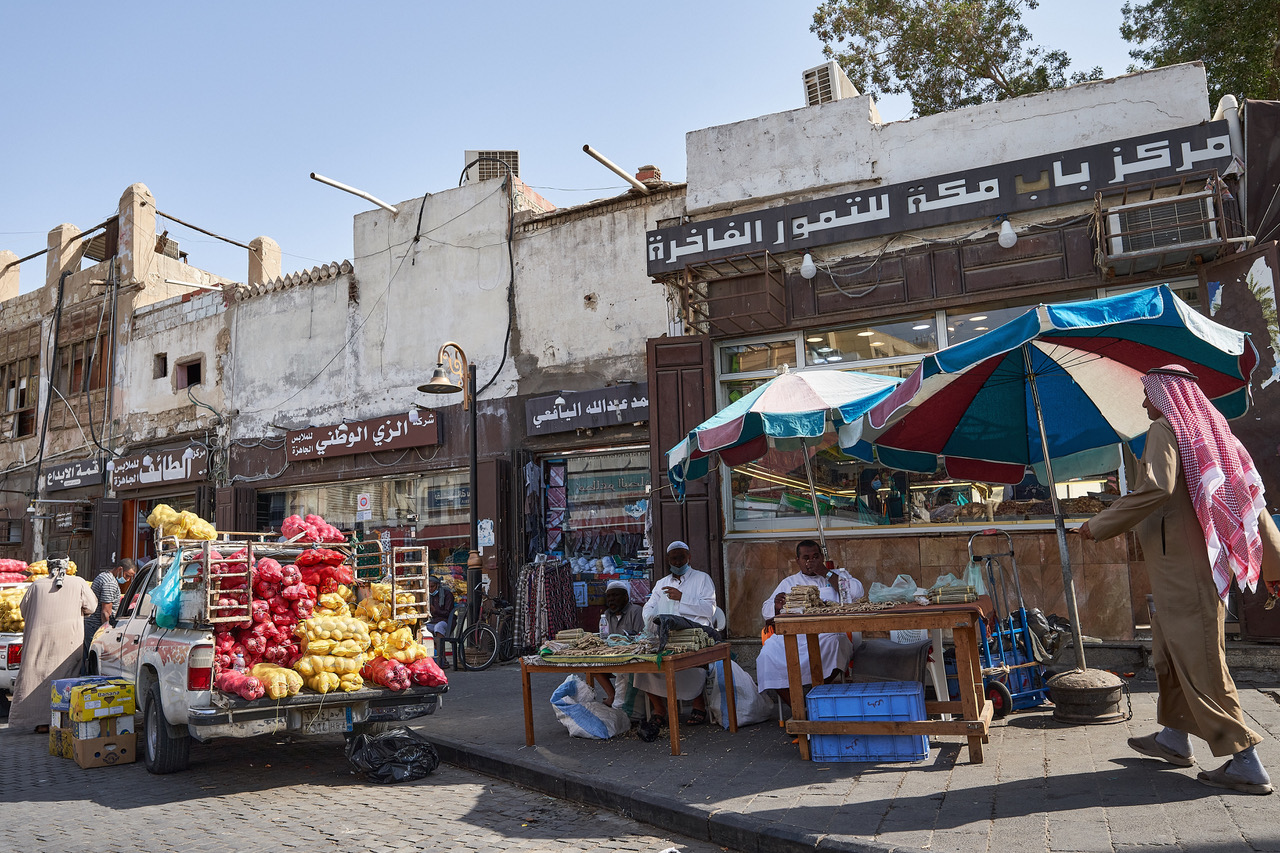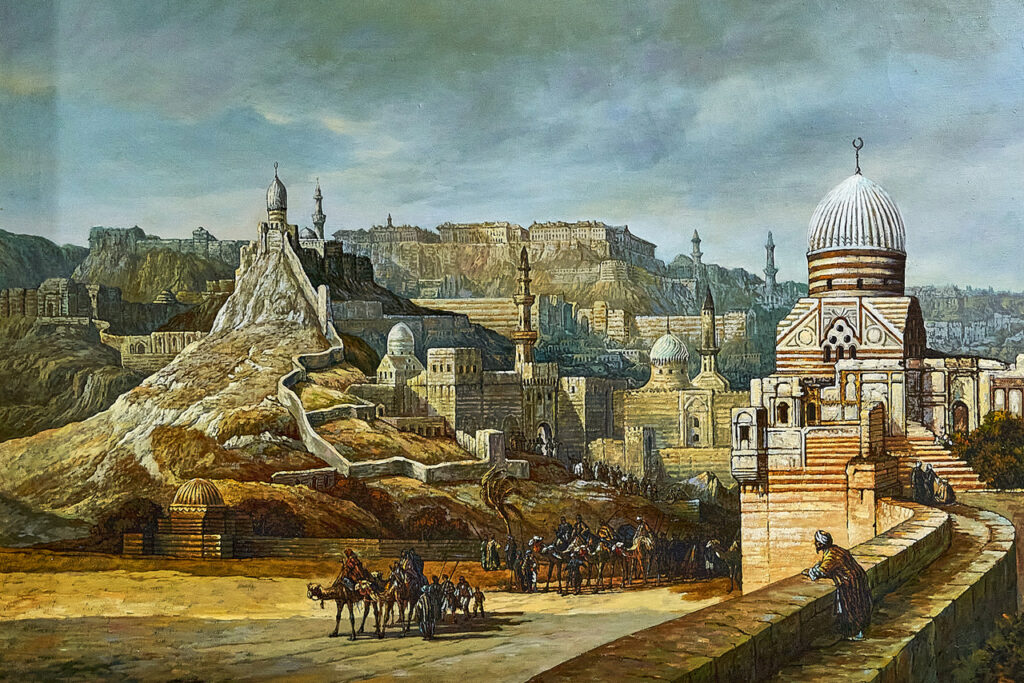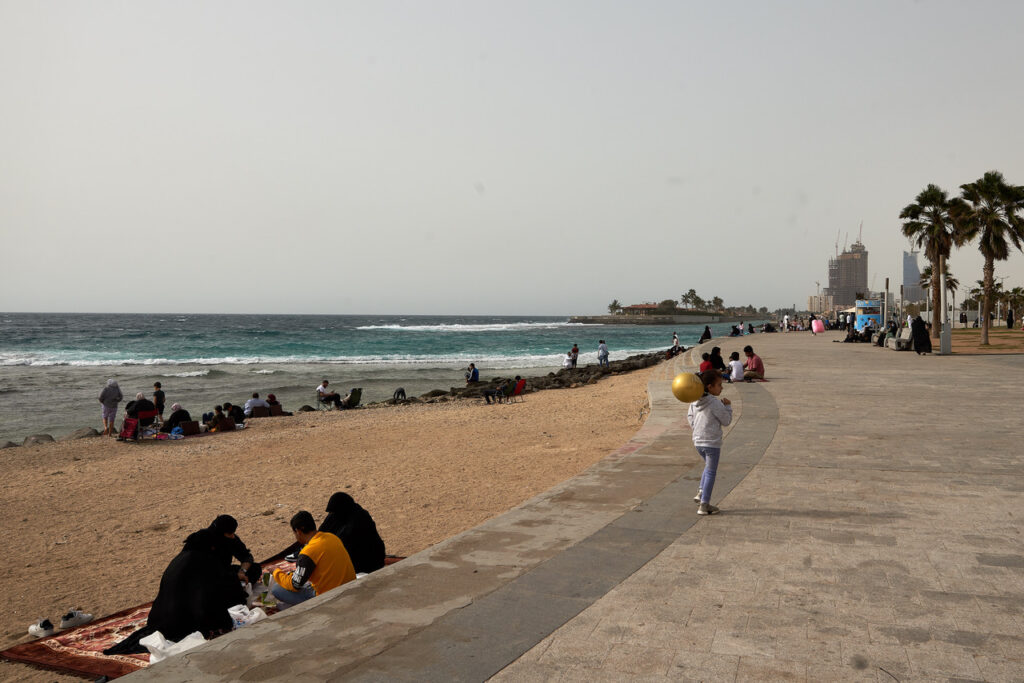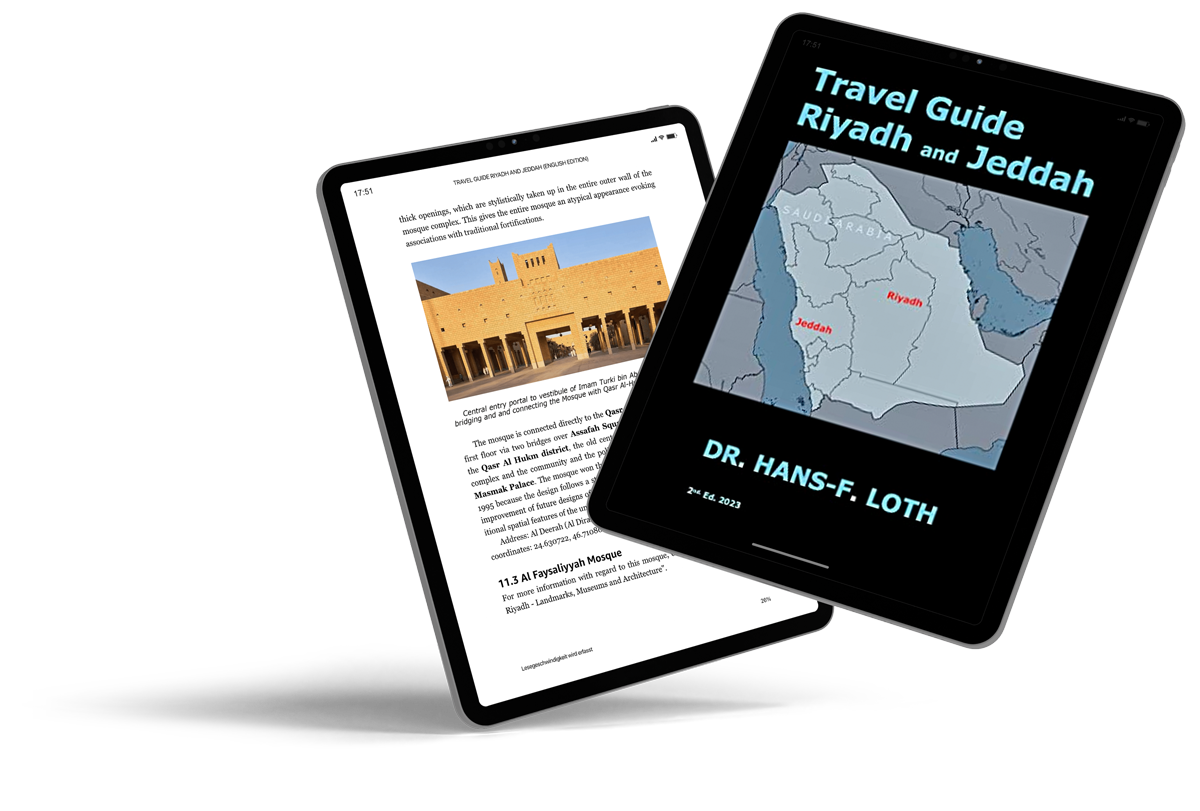Al Balad – Multicultural Quarter and Distinct Architecture
Al Balad (meaning “The City”) is the oldest and most historic neighbourhood in the center of Jeddah – and a “must see” for Jeddah’s visitors. The neighbourhood is a vibrant cocktail of cultures and traditions.
Beginning around the 16th century, Al Balad was walled to protect residents from attacks by foreign powers seeking to conquer the city, especially by sea. Today, only a few city gates remain from the city walls. Within that defensive wall, Al Balad was divided into neighbourhoods or harat where business and commerce revolved around traditional souqs or marketplaces and khans, covered markets generally associated with stores.
Its proximity to the Islamic Port of Jeddah in the southwest of the urban area is understandable due to its historical and functional development. Thus, historic Jeddah and present-day Jeddah were and are directly linked to the Hajj, the annual Muslim pilgrimage to the Holy City of Mecca, both on an intellectual, “spiritual,” and architectural and urban planning level.
Since the 7th century, Jeddah was an important port for trade routes that later reached the Indian Ocean, from where goods were transported to Mecca. The city was also the gateway for Muslim pilgrims arriving by boats to continue their journey to Mecca.
Because of this dual role, the city developed into a thriving multicultural center, characterised to this day by a distinct architectural tradition that includes the three- to five-story mansions, sometimes somewhat exaggeratedly referred to as “tower houses,” built in the late 19th century.
Al Balad is famous for its old buildings, the (unfortunately) ephemeral multi-storey coral stone houses.
The traditional multi-storey buildings and merchant houses of Al Balad often still belong to the families that inhabited them before the oil era. But with the emerging wealth from the oil boom in the 1970s and 1980s, Saudis moved out of the area and migrant workers arrived. Al Balad developed into a poorer neighbourhood.
Since its designation as a UNESCO World Heritage Site in 2014, several traditional buildings have been restored and opened to the public. I
In addition, Al Balad is home to several historic mosques from different eras.

Shopping in Al Balad – Souqs
Many small stores sell goods of all kinds, including food, fruits and vegetables, locally made leather goods (sandals and bags), rugs, toys and souvenirs. You can even buy jewellery and gold at the Al-Balad Gold Market in the western part next to King Abdulaziz Road. A well-known bakery in Jeddah, Al Saidi Bakery, is located a short distance north of the western part of Souq Al Jami, near the Ash Shafi Mosque. Souq Al Alawi, which stretches from west to east, is an authentic market where you can buy traditional, oriental and Hejazi clothing and gems.
At the end of this market, you will reach the ever-bustling Souq Al Badu. Both souqs are adjacent to Souq Al Nouriyah (Souq Bab Makkah), a bustling neighbourhood of street vendors and small stores. Souq Nada stretches from the north to the south of the western part of Al Balad.
Cafes and Eateries
There are a number of cafes and eateries in Al Balad. There are also a number of traditional Hejazi tea houses throughout the neighborhood. For authentic taste experiences, you don’t have to look far to find an important part of Hejazi traditions: the balila stalls, which sell a traditional dish made from chickpeas, garlic and various spices.
If you want to learn more about Al Balad, to follow a suggested walking tour, or to have a look at detailed maps of the sights and souq streets, you can do all that in myebook “Dr. Hans-F. Loth – Travel Guide Riyadh and Jeddah”.


